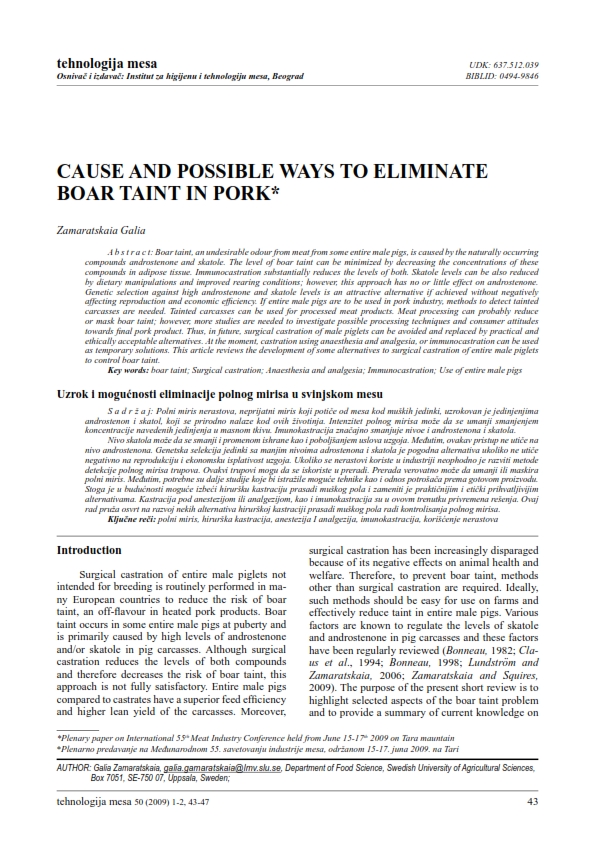CAUSE AND POSSIBLE WAYS TO ELIMINATE BOAR TAINT IN PORK
Abstract
Boar taint, an undesirable odour from meat from some entire male pigs, is caused by the naturally occurring compounds androstenone and skatole. The level of boar taint can be minimized by decreasing the concentrations of these compounds in adipose tissue. Immunocastration substantially reduces the levels of both. Skatole levels can be also reduced by dietary manipulations and improved rearing conditions; however, this approach has no or little effect on androstenone. Genetic selection against high androstenone and skatole levels is an attractive alternative if achieved without negatively affecting reproduction and economic effi ciency. If entire male pigs are to be used in pork industry, methods to detect tainted carcasses are needed. Tainted carcasses can be used for processed meat products. Meat processing can probably reduce or mask boar taint; however, more studies are needed to investigate possible processing techniques and consumer attitudes towards fi nal pork product. Thus, in future, surgical castration of male piglets can be avoided and replaced by practical and ethically acceptable alternatives. At the moment, castration using anaesthesia and analgesia, or immunocastration can be used as temporary solutions. This article reviews the development of some alternatives to surgical castration of entire male piglets to control boar taint.
Key words: boar taint; Surgical castration; Anaesthesia and analgesia; Immunocastration; Use of entire male pigs





